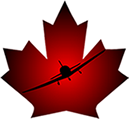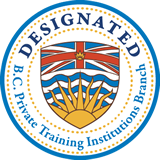 |
|
Landing: Part III, The Flair“An artist’s flair is sometimes worth a scientist’s brains.” --Anton Chekhov-- In the last couple of months, we have taken a look at the first stage of the landing process: the approach and at the visual information flow affecting our performance as a pilot. We discussed the idea that a good landing begins with a good approach and the importance of understanding and knowing how to deal with the flow of visual information our eyes provide our brain. If our approach is stabilized, we are well in control of airspeed, power, altitude, attitude, rate of sink, and are making all the necessary corrections for wind drift. Now we’re ready to initiate the flair phase of our landing. This phase is a critical aspect of the landing process and will determine whether we make a pretty and successful landing or whether we need to power up and give the approach process another try. As the flair begins, we are on the verge of contact with the ground. Things are in a dynamic state of change. We must be focused and alert but not fixated. As hard as it may seem to be relaxed and open so close to the critical moment of touchdown, this is the time to do just that. The less mental distance we create between perception and response, the better equipped we will be to deal with a rapidly changing situation. Animals, people, aircraft, or other vehicles can suddenly appear on the landing surface. The wind, as we approach the ground, typically becomes more uncertain and often varies its direction as a result of its interaction with the ground and other physical barriers, buildings and trees, for example. We must appreciate the changing environment, remain alert and focused and be able to respond moment to moment during this phase of flight. Pilot decision-making about visual focal points is a product of our training and experience. Knowing where and how to look at things is an important factor in ensuring a safe landing. On approach our major focal point has centred on our round-out point. Maintaining a stabilized approach has assisted in this process. As we reach the moment of flair, we will be adjusting the pitch attitude of the aircraft from the descent attitude to the landing attitude and our visual focal point must shift to accommodate this change in attitude. Research has demonstrated that by directing our central vision during flair at a shallow downward angle, between 10 to 15 degrees toward the runway, we can achieve good results. As the aircraft’s attitude changes during the flair, our focal point will shift accordingly and progress down the runway as the flair and descent continues (1). When do we commence the flair? Frequently, the answer is something like “At just the right moment.” This, of course, is not a very satisfactory or helpful answer. Flair height is a function of the speed and weight of an aircraft. The larger the machine, the more time and distance is required to transition from the descent attitude to a flight path roughly parallel with the runway surface. For light, training aircraft, something in the neighbourhood of 20 feet works very well. So how in the world do we know when we have reached that magic height? Our altimeter is not really able to give us the precise information we need. Certainly it is of some help, but our main clues will always come from outside unless, of course, we are equipped with an auto-land system. Not a likely scenario in a light, training type aircraft. As we discussed last time, the visual flow of information coming to us through our eyes is subject to a number of illusions and our depth perception is working at a low level as we approach at relatively high speed that onrushing concrete, grass, or gravel surface. We must depend a great deal on our sense of perspective and our peripheral vision to appreciate height and distance. We all know that objects of the same size, located at different distances, appear to be different in size. The farther object will appear smaller than the nearer. This capability—the capacity to evaluate distance in relation to perspective—is vital to our appreciation of where we are and what comes next. In addition, we obtain height information relative to any object with a vertical dimension, for example, trees, buildings, vehicles, people, through our peripheral perceptions. Many pilots will speak about the moment when the runway appears to begin to move. This sense of relative motion occurs at just about the right moment to begin our flair, as well. One of the most lucid accounts of this process is provided by Wolfgang Langewiesche in his classic book, Stick and Rudder, first published back in 1944 (2). I can highly recommend this excellent book, a delightful reading experience for pilots of all ages. Of course, if we have taken the appropriate steps and established a controlled and stabilized approach, our problem at the point of flair is greatly simplified. We will arrive at our round-out point in good order at the correct altitude, airspeed and rate of descent and be well compensated for any crosswind drift and gust factors; all will flow naturally. As we begin our transition from approach to flair, essentially a levelling out of the aircraft just above the runway surface, we may also begin to reduce power. Depending on the type of landing we are setting up for and the type of aircraft we are flying, we may need to carry some power until or perhaps beyond the moment when the aircraft has touched down. It is important to keep in mind the two main effects of reducing power: left to its own devices, the aircraft will drop its nose and yaw to the right, assuming we are not flying behind a Russian or English built engine that turns in the opposite direction from North American built engines. If you are alert and ready to compensate for these built-in tendencies, you will not be surprised by them or come to grief. Initially we gently bring the aircraft to a level or cruise-type of attitude just above the runway surface. Using a combination of pitch, yaw, and roll compensations as required, we will, for a brief time, simply fly the aircraft straight and level at a very low altitude down the centre of the landing surface giving the aircraft time to dissipate some of its kinetic energy. Remembering from our high school physics that kinetic energy = (M/2)V2, where M represents the Mass of the aircraft and V represents its velocity, we see the heavier the aircraft and the greater its speed, the more energy we will have to dissipate for the aircraft to land. Velocity, since it increases by its square, is a very significant factor. Another good argument for that controlled and stabilized approach. As the aircraft begins to dissipate its kinetic energy, it will lose lift. One of two things will occur: it will descend or it will slow down. It takes energy to maintain flight. We can compensate for one or the other of these tendencies but not both. Our preference at this point is to opt for slowing down; we don’t have much altitude to give up. In order to remain in level flight, however, we must maintain necessary lift. We can produce lift either through speed or angle of attack. Since our speed option is rapidly diminishing and our altitude is minimal, increasing our angle of attack is the only option open to us. As the aircraft slows, we will gradually and deliberately increase our angle of attack to maintain flight. Increasing our angle of attack, as we know well, also increases induced drag, further slowing our now very underpowered aircraft. As long as this process is kept under control, all is well. The two major errors people tend to make during the flair phase of the landing process are to either over-flair or under-flair. Over-flaring produces what we refer to as ballooning: the aircraft turns its excess kinetic energy into climb. This is neither desirable nor safe and must be corrected immediately. We are low and slow. We do not want to risk a stall 10 feet above the landing surface. At the first indication of ballooning, we must gently lower the nose and regain a level flight attitude just above the landing surface. It may become necessary, if the balloon is too great, to add some power to reduce our rate of sink. If the balloon is at all extreme, it may be a more positive step to abort the landing: establish the aircraft in level flight, add full power and initiate a go-around or balked landing procedure. The other common error during flair is failing to level off above the runway, to under-flair. This is hard on the undercarriage and can produce some very exciting and expensive consequences. It is frequently the result of allowing ourselves to visually fixate on the touchdown point losing reference to the perspective and peripheral visual information helping us judge height and position. The flair phase of landing allows us to dissipate the aircraft’s kinetic energy sufficiently for the next phase: touchdown. Ideally, we will run out of airspeed and altitude at just about the same moment. Correctly executed, the flair transitions us smoothly from approach to touchdown. It is a critical aspect of the landing process and deserves our full attention and focus. Many students and, indeed, experienced pilots tend to rush this process. Take your time; do it right. The aircraft will let you know when it is ready to proceed with landing. Notes
|


